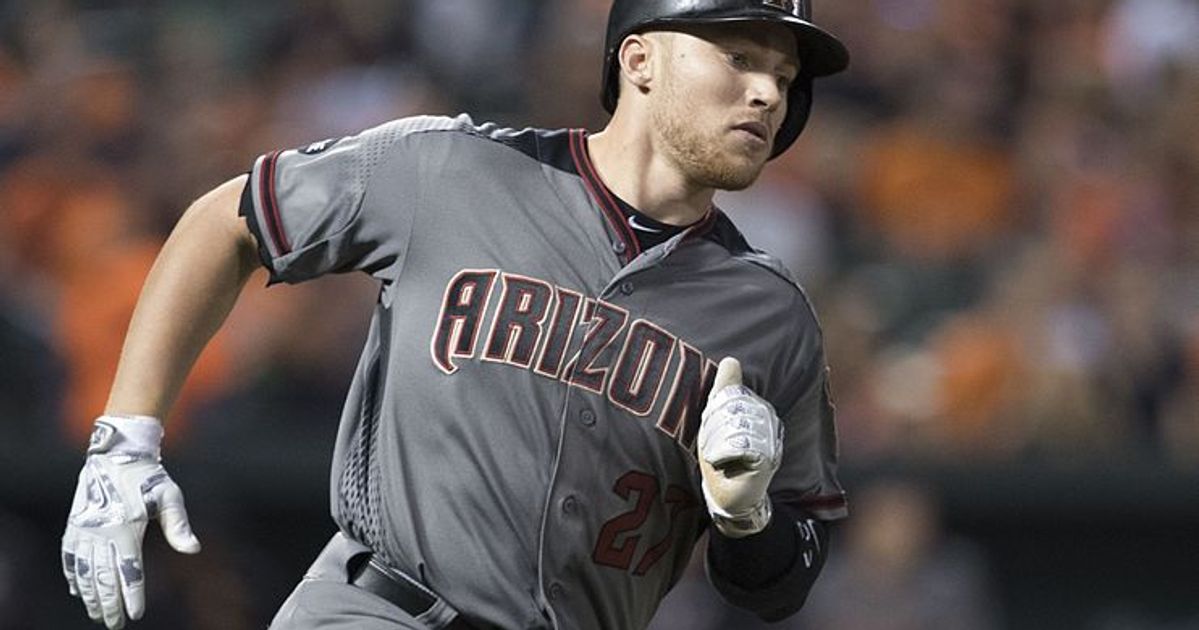The New York Yankees may have found an answer to their infield questions.
Brandon Drury, 25, was acquired from the Arizona Diamondbacks as part of a three-team trade that saw Yankee second baseman prospect Nick Solak sent to the Tampa Bay Rays. Also part of the deal was Steven Souza Jr., who was flipped to Arizona from Tampa Bay, further confirming that the Rays are in a full rebuild.
Drury's name had been linked to the Yankees for most of the offseason. After Starlin Castro was dealt to the Marlins as part of the package that brought in Giancarlo Stanton, there was a vacancy left at the second base position. When the Yankees traded Chase Headley to the Padres not too long after, there were now two question marks that needed to be answered.
Who is Brandon Drury?
Versatile. That's the best word to describe Drury's role with the Arizona Diamondbacks since his debut in 2015. The 25-year-old proved he can play any position the manager asks of him. In 2016, he split time between the three outfield positions, both corner infield positions, and second base. 2017 saw him in a more established role where he started 114 games at second base as the Diamondbacks marched their way to the National League Division Series before falling in three games against the Los Angeles Dodgers.
The Grants Pass, Oregon native will be asked to plug one of the two holes in the infield left by the Castro and Headley trades. In his short time in the majors, the righty-hitting Drury has proven he can be a more than capable presence in an already stalwart lineup. His 37 doubles in 2017 were good enough for fourth amongst league-wide second baseman, although his overall WAR (Wins Above Replacement, which sums up a player's contribution to his team) was a measly 1.6. His RBI total was equal to Castro's, although the latter played in fewer games due to two bouts with a faulty hamstring.
What this means for the Yankees
Drury is a low risk, high reward type of player that can be plugged into either third base or second. With the departures of Headley and Castro, it was believed the Yankees would look internally to anoint their successors, and it is still possible for this to happen. Both Gleyber Torres and Miguel Andujar, the two prospects who stand on the cusp of the big leagues, enter Spring Training trying to claim second and third base as theirs, respectively. Tyler Wade is also expected to compete.
It's a risky move to thrust so much responsibility on two kids who are barely over the legal drinking age, which is why Drury's acquisition makes sense. It's more than possible that either Torres or Andujar will make the big leagues sooner rather than later, but it is more unlikely the two of them would do so simultaneously. Torres is coming off an injury-plagued season that saw limited action at Triple-A Scranton, while Andujar has major tuning up to do defensively.
In Drury, they get a proven professional ballplayer under team control until he is arbitration eligible next winter. His experience as a utility man gives the Yankees the flexibility to name him the Opening Day third baseman if Torres makes the team and Andujar doesn't, or as Opening Day second baseman if Andujar makes the team and Torres doesn't. He also adds depth to first base in the occasional day Greg Bird needs a rest.
This is a low-cost addition to a Yankees team that is trying to stay under the $197m tax threshold. Entering his age-25 season, it is believed Drury has not yet hit his full potential and the Yankees are gaining him at the right time.
Explore new topics and discover content that's right for you!
MLB The Show



